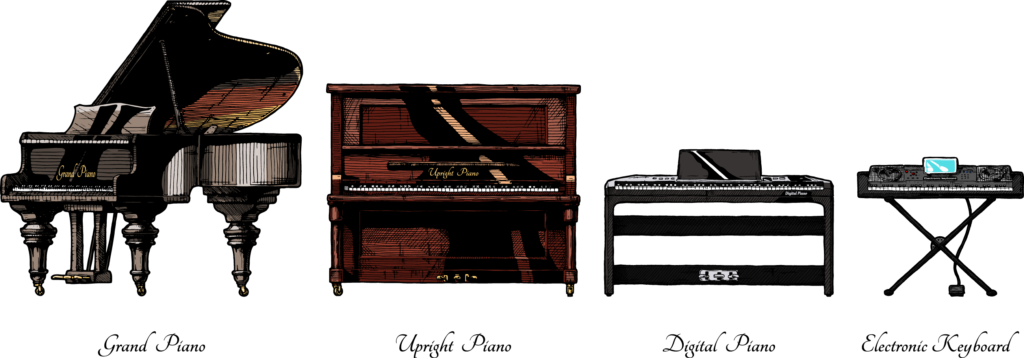Congratulations! You’ve taken the exciting step of enrolling your child in piano lessons! You’ve found a time that works for the whole family, and now, all that’s left is setting your child up for success (no pressure, right?). To make sure this musical adventure is as smooth and rewarding as possible, here are a few tips for picking the right piano and keeping those lessons on track.

First things first—provide the right tools. I mean, obviously, you’ll need a piano! Yes, an actual instrument. You’ll want full-size keys—because, shocker, tiny keys are not great for developing proper technique. And no, a roll-up piano is not an option. Here’s what you really need:
- Minimum 61 keys: Sure, but if you get 88 keys, then your child can sit down at any piano without wondering where their hands go. It’s all about spatial awareness.
- Stand and bench: If it is going to be a keyboard, make sure you also have a stand and a bench, at the correct heights, of course! Piano posture is a small but crucial issue when learning piano and by simply fixing the way your child sits at the piano can make a huge difference in your child’s musical learning.
- Touch-sensitive and weighted, not spring-loaded: If you’re going digital (electric), make sure the touch feels right. The goal is to get as close as you can to a real acoustic piano—without breaking the bank, of course.
- A well tuned acoustic piano is usually a teacher’s preference for learning the piano- the key word here is “well tuned”. Here is an article to read on the differences between digital and acoustic pianos.
And one last thing:
- Placement of the instrument: Obviously, you’ll want to create the perfect learning environment. It’s not like we need to point out the basics, but here we go: no distractions from electronics, TVs, computers, phones, or whatever else your child could get sucked into-I mean, distracted with. If the space isn’t good enough for you to get something done, do you really think your child is going to have some amazing practice session there?




